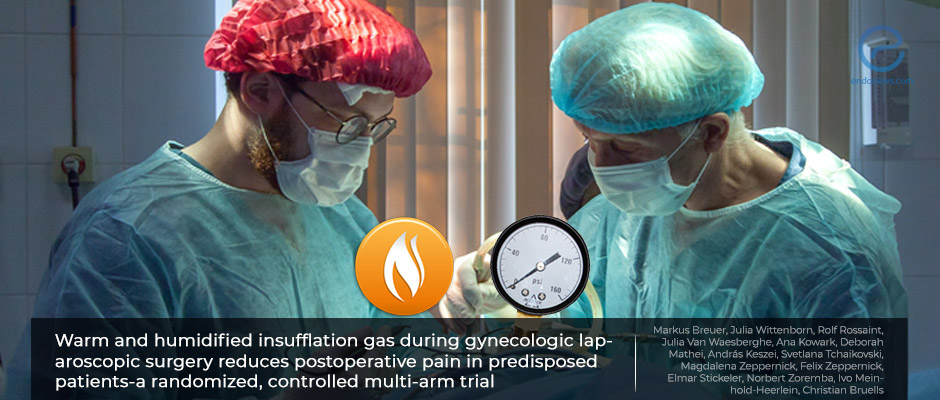How to Reduce Pain After Laparoscopic Surgery
Nov 5, 2021
Women undergoing laparoscopic surgery for endometriosis will experience less pain following the operation.
Key Points
Highlights:
- Using warm and humidified gas during laparoscopic endometriosis surgery could reduce pain following the operation.
Importance:
- Women undergoing laparoscopic surgery for endometriosis will experience less pain following the operation.
What's done here:
- A prospective, randomized, controlled study on 150 participants to investigate the effect of the humidity and the temperature of the insufflated gas during laparoscopy on the post-op pain.
- The pain was asesed for different localizations every 12 hours for a week following surgery.
- The secondary endpoints were the need for painkillers; the time to stay in the recovery room, and the postoperative hospitalization.
Key results:
- Using humidified warm gas with forced-air warming blanket led to significantly less pain significantly less ibuprofen use compared to dry cold CO2 with forced-air warming blanket.
- Women who were undergoing laparoscopic surgery for the treatment of endometriosis or those who did not undergo previous surgery experienced less pain when humidified warm air with or without forced-air warming blanket was used.
Limitations:
- The pain score differences between women were not statistically analyzed.
- Only one-third of patients did not have previous abdominal surgery so the results stratified by previous abdominal surgery may be less meaningful.
Lay Summary
Using humidified warm gas with forced-air warming blanket during laparoscopic surgery resulted in significantly less pain in the recovery room, according to a new study published in the journal "Surgical Endoscopy". In patients with endometriosis, using humidified warm air even without forced-air warming blanket resulted in significantly less pain compared to insufflation with dry cold CO2 with forced-air warming blanket.
“(…) in predisposed patients with endometriosis and who could otherwise expect high pain levels, warm and humidified gas may be beneficial,” wrote the authors of the study.
Pain following laparoscopic surgery is still a common problem. This is caused by the pressure inside the abdominal cavity caused by pressurized CO2 in the peritoneum.
Here, a group of researchers led by Dr. Christian Bruells from the Department of Anesthesiology, University Hospital of the RWTH Aachen in Germany hypothesized that humidified and prewarmed insufflation gas may reduce pain following laparoscopic surgery.
To test their hypothesis, the researchers conducted a prospective randomized controlled study. The effects of temperature and humidity of the insufflated gas on the postoperative pain were investigated. They assessed pain for different localizations every 12 hours for a week following surgery. The secondary endpoints of the study were the need for painkillers and epidural, the amount of time the women stayed in the recovery room, and the amount of time they stayed in the hospital.
The study recruited 150 women, ages 18 to 70 who were either insufflated with dry cold CO2 with forced-air warming blanket, humidified warm gas without forced-air warming blanket, or humidified warm gas with forced-air warming blanket.
CO2 insufflation into the peritoneal cavity during laparoscopic endometriosis surgery is necessary to create enough operating space so the surgeon can adequately visualize the different structures and manipulate the instruments.
Research Source: https://pubmed.ncbi.nlm.nih.gov/34596747/
laparoscopic surgery pain following surgery insufflation gas endometriosis humidity warm postoperative CO2

